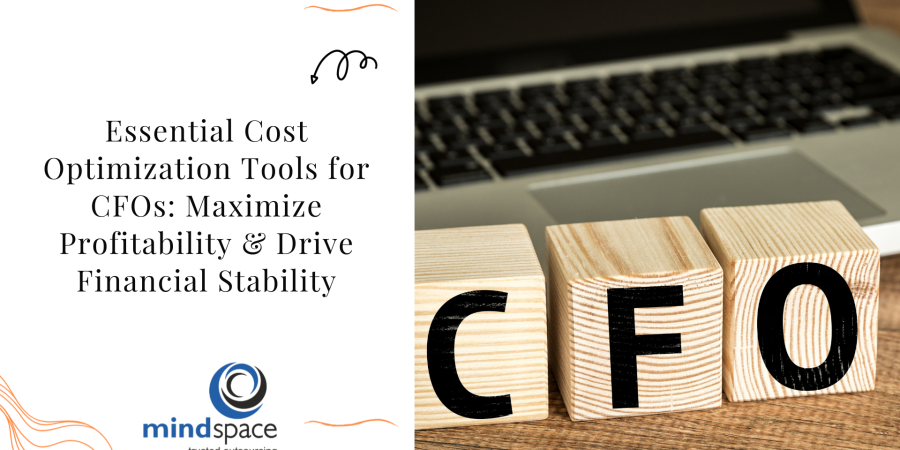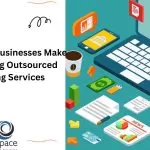Essential Cost Optimization Tools for CFOs: Maximize Profitability & Drive Financial Stability
In today’s competitive business landscape, the Chief Financial Officer (CFO) plays a pivotal role in ensuring financial stability, maximizing profitability, and optimizing costs. One of the most critical responsibilities for CFOs is managing cost adaptation—reducing expenses while maintaining operational efficiency and performance. Thankfully, several cost optimization tools are available to help CFOs make data-driven decisions, automate financial processes, and drive business success.
This article explores the top cost optimization tools every CFO should consider for better financial management, cost reduction, and strategic decision-making.
1. Enterprise Resource Planning (ERP) System
An ERP system integrates various business functions, allowing CFOs to take a centralized approach to managing financial and operational data. These platforms provide real-time insights into costs, revenue, and resource allocation, helping businesses streamline financial performance.
Key Features:
-
Financial Management: Tracks income, expenditures, and budgets efficiently.
-
Purchase & Inventory Management: Reduces wasteful spending on supplies and materials.
-
Automation: Minimizes errors in accounting, payroll, and financial reporting.
Popular ERP Systems:
-
SAP S/4HANA
-
Oracle NetSuite
-
Microsoft Dynamics 365
By leveraging an ERP system, CFOs can reduce administrative overheads, cut excess costs, and improve financial visibility across departments.
2. Financial Planning and Analysis (FP&A) Software
FP&A software enables CFOs to plan, budget, and forecast with precision. These tools are ideal for conducting variance analysis, financial modeling, and landscape planning to ensure cost-effective decision-making.
Key Features:
-
Scenario Analysis: Models different business conditions and evaluates their financial impact.
-
Budgeting & Forecasting: Provides accurate expense predictions and revenue projections.
-
Data Visualization: Offers dashboards and detailed reports for effective cost tracking.
Popular FP&A Tools:
-
Workday Adaptive Planning
-
Vena Solutions
These tools help CFOs align costs with strategic goals, ensuring profitability while reducing unnecessary expenditures.
3. Expenditure Management Software
Tracking employee expenses, travel costs, and reimbursements can significantly impact a company’s bottom line. Expenditure management tools help streamline the approval, tracking, and reimbursement of business expenses.
Key Features:
-
Automated Receipt Scanning: This reduces data entry errors.
-
Policy Compliance Checks: Ensures alignment with company policies.
-
Integration with Accounting Systems: Ensures seamless financial synchronization.
Popular Expenditure Management Tools:
-
SAP Concur
-
Expensify
By automating the expenditure reporting process, CFOs can prevent overspending, identify fraudulent claims, and effectively enforce expense policies.
4. Cost Accounting Software
Cost accounting software helps CFOs track and allocate costs to different products, services, or departments, providing valuable insights into cost drivers and opportunities for savings.
Key Features:
-
Activity-Based Costing (ABC): Allocates costs based on real resource usage.
-
Job Costing: Tracks expenses for specific projects or jobs.
-
Cost Variance Analysis: Compares actual costs to expected costs to identify discrepancies.
Popular Cost Accounting Tools:
-
QuickBooks Enterprise
-
Rishi Interact
-
Xero
Implementing cost accounting software ensures accurate cost allocation, leading to better financial control and increased profitability.
5. Purchase Management Software
Procurement management tools help optimize purchasing decisions by analyzing costs, managing contracts, and identifying cost-saving opportunities in supplier relationships.
Key Features:
-
Supplier Performance Analysis: Helps select cost-effective vendors.
-
Purchase Order Automation: This reduces errors and manual processes.
-
Expenditure Analysis: Identifies cost-cutting trends and opportunities.
Popular Purchase Management Tools:
-
Coupa
-
Procurify
-
GEP SMART
These tools enable CFOs to improve procurement strategies, reduce supplier risks, and unlock cost savings through better vendor management.
6. Payroll & Workforce Management Software
Labor costs are a significant expense for most businesses. Payroll and workforce management tools help CFOs manage employee costs, scheduling, and profitability more effectively.
Key Features:
-
Automated Payroll Processing: Reduces administrative costs.
-
Overtime & Attendance Tracking: This minimizes unnecessary labor expenses.
-
Compliance Management: Ensures adherence to labor laws and tax regulations.
Popular Payroll & Workforce Tools:
-
ADP Workforce Now
-
Gusto
-
Paycom
With these tools, CFOs can optimize labor costs, increase productivity, and ensure compliance with payroll and labor regulations.
7. Cloud-Based Accounting Software
Cloud accounting software provides real-time financial insights and automates accounting tasks, reducing the costs associated with manual bookkeeping and data entry.
Key Features:
-
Automatic Bank Reconciliation: Streamlines financial processes.
-
Multi-Currency & Tax Compliance: Ideal for global businesses.
-
Customizable Financial Reporting: This offers strategic insights for decision-making.
Popular Cloud Accounting Software:
-
QuickBooks Online
-
Xero
-
FreshBooks
Cloud-based accounting reduces infrastructure costs and fosters better collaboration among financial teams.
8. Business Intelligence (BI) & Analytics Tools
BI and analytics tools help CFOs analyze financial and operational data, identify cost-saving opportunities, and improve strategic decision-making.
Key Features:
-
Predictive Analytics: Helps forecast future financial risks and opportunities.
-
Custom Dashboards: Provides real-time cost tracking and performance insights.
-
Data Integration: Combines data from multiple sources for informed decisions.
Popular BI & Analytics Tools:
-
Tableau
-
Microsoft Power BI
-
Domo
These tools empower CFOs to make data-driven decisions, increasing cost efficiency and driving business growth.
9. Tax Compliance & Automation Tools
Tax compliance tools help CFOs manage tax liabilities, ensuring compliance with both local and international tax laws.
Key Features:
-
Automatic Tax Calculation: This reduces errors in filing and tax reporting.
-
Audit Support: Helps maintain proper records for audits.
-
Multi-Jurisdiction Compliance: Ensures adherence to diverse tax laws.
Popular Tax Compliance Tools:
-
Avalara
-
TaxJar
-
Thomson Reuters ONESOURCE
By leveraging tax automation software, CFOs can reduce compliance risks and identify potential tax-saving opportunities.
10. Contract Lifecycle Management (CLM) Software
Contract management software helps CFOs track vendor agreements, membership costs, and recurring expenses, preventing unnecessary renewals or penalties.
Key Features:
-
Contract Repository: This is a Centralized storage for all agreements.
-
Automatic Alerts: Notifies CFOs about contract renewals and expirations.
-
Expenditure Analysis: Identifies potential savings in vendor contracts.
Popular CLM Tools:
-
DocuSign CLM
-
Agiloft
-
Icertis
By using CLM software, CFOs can effectively manage contracts, mitigate financial risks, and secure better terms with vendors.
Conclusion
Cost adaptation is a continuous process that requires CFOs to leverage technology for better financial management. From ERP systems and FP&A tools to BI and tax compliance software, these cost optimization tools empower CFOs to track expenses, improve profitability, and ensure financial stability.
By integrating these tools into their financial strategies, CFOs can not only reduce costs but also increase efficiency, compliance, and overall business stability. Investing in the right financial technologies is no longer optional; it’s a necessity for modern CFOs to achieve long-term business success.

